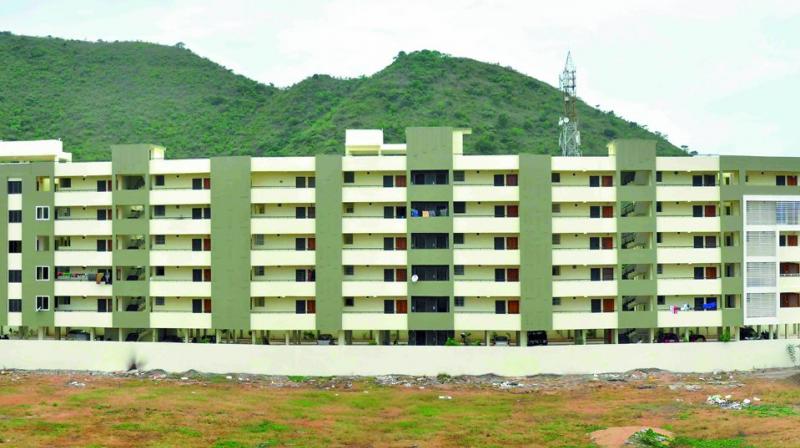Amaravati rock forms attracting geologists

Vijayawada: The present Capital region development area, which is already identified as a significant zone, has started attracting the attention of geologists across the country.
The studies carried out by the geological experts and GSI have found a different yardstick for Amaravati. Known for its rich geological importance, now Amaravati is under the keen observation of enthusiastic geologists across the state of Andhra Pradesh and even from abroad.
The GSI studies have found out three prominent geological formations culminating at this new Capital city. The Kondapalli region in the Eastern Ghats, AP, consists of high-grade ‘granulite facies’ rocks — charnockites, in which chromite occurs. Chromite is the most important ore of Chromium, which is used as a refractory metal and for the manufacture of Ferro Chrome Alloys.
A number of mines near Kondapalli were active in mining for several years. Experts believe exploration is needed to locate more such deposits or extensions of the deposits. These are Precambrian rocks characterised by Khondalites and Charnockites trending the north-east and south-west region followed by Proterozoic Cuddapah rocks in the south.
While the north eastern part of Cuddapah is prominent in Guntur district, in the western part there are rocks belonging to Kurnool which are equivalent to the Vindhyan group. So Amaravathi is known to have the oldest Precambrian rocks, that are almost 3,000 million years old, and also relatively younger Proterozoic rocks, which are 600 million years old, simultaneously in this zone.
Interestingly, these two formations are followed by minor exposures of Gondwana rocks, which are 200 million years old.
The recent alluvium of Delta was also the outcome of these rocks. More explorations in the said areas, will certainly support the newly formed state’s economy, said Professor M. Jagannadha Rao of Andhra University. “The Chief Minister can concentrate on this aspect, which would be helpful for the state,” he said.
Amaravathi can be considered the most important geological heritage site. The Precambrian rock were the host of ore mineral chromite found near Kondapalli. The Proterozoic rocks of Cuddapah basin, which were exposed as the Agnigundala belt near Vinukonda of Guntur, were known for base metal mineralisation like copper, lead and zinc sulphide.
Diamond exploration possible in Vindhyas
Geologists have found that the Vindhyan geological system can still be considered for diamond exploration.
Known for diamond bearing conglomerates, these rocks are found in the Krishna basin, which is called the Kurnool system.
The diamonds, which are derived from source rocks, are transported in the Krishna river bed, along with the pebbles. They settle in the pot holes in the bottom of the riverbed. These are the target areas for diamond exploration.
This can be done in the paleo (ancient) river channels of Krishna River, said experts.
It is believed that the Gani Kolluru mines of the Nizam’s times, were found in perhaps a pebble bed with diamonds, in a series of pot holes formed earlier.
The Kohinoor diamond might be from such a deposit, luckily found by an individual of those times.
Such conglomerates can still be occurring in the sub-surface, which need to be explored in the western part of Bellamkonda, and other areas of the paleo riverbed. Some of the mining companies from abroad made some initial attempts for diamond exploration in the Krishna riverbed, in the past two decades. “Amaravati has a unique geological identity, where a culmination of three different formations has made this place unique,” said Professor M. Jagannadha Rao, of Andhra University.
“The area is not only unique for its geological history, but also for the richness of economic minerals,” the professor said.
“For several decades Kondapalli has been known for its chromite occurrence,” said Professor Jagnnadha Rao, who is also the former director of Delta Studies, Andhra University.
Mining was active in this region for the valuable ore chromite, which is a strategic mineral for ferro chrome industries, refractory industries and also it is the material for high temperature- resistant equipment, generally used by defence, for its applications. The host rocks for chromite are precambrian rocks characterised by khondalites and charnockites, according to him.
This is not only important academically, but it has proved to be of economic importance where extensive mining was carried out for chromite and base metals — copper, lead and zinc in recent times.
Besides, historical reports of diamond occurrence made this place significant, Prof. Rao said, adding Amaravati’s economy can be boosted by exploration of these areas.

